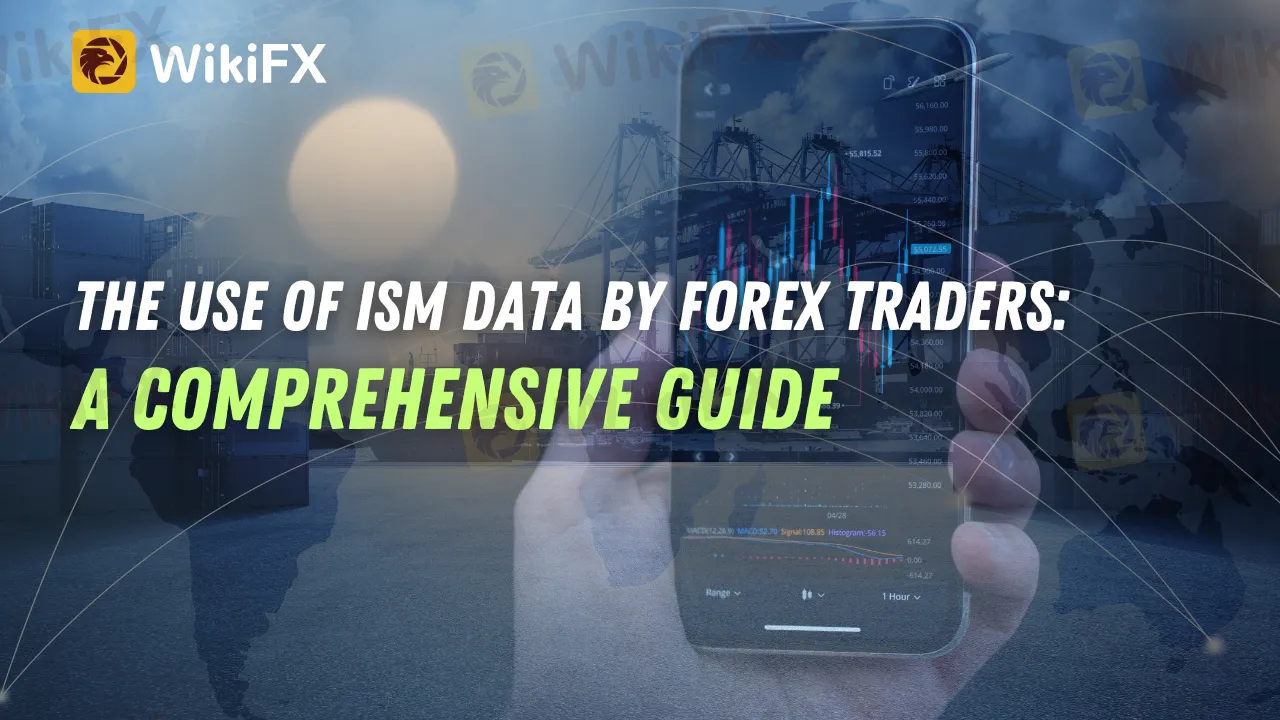简体中文
繁體中文
English
Pусский
日本語
ภาษาไทย
Tiếng Việt
Bahasa Indonesia
Español
हिन्दी
Filippiiniläinen
Français
Deutsch
Português
Türkçe
한국어
العربية
The Use of ISM Data by Forex Traders: A Comprehensive Guide
Abstract:Explore how the ISM manufacturing index impacts global forex trading and learn how traders utilize this key data to inform their strategies.

When it comes to foreign exchange (Forex) trading, the data published by the Institute for Supply Management (ISM) plays a crucial part. The ISM indices pertaining to manufacturing, construction, and services have substantial effects on global currency rates. Therefore, for Forex traders, knowing and understanding this data is pivotal.
Decoding ISM
ISM, the world's oldest management institute, was established in 1915 and has members present in over 300 countries. The Institute for Supply Management surveys economic operations from both manufacturing and service aspects. The valuable data acquired from its vast network of procurement executives make ISM a trustworthy source of information on worldwide economic trends, thereby affecting currency values.
Each month, ISM reports changes in production levels, providing key insights into the economic cycle. In fact, the strength of a country's economy is often gauged by the robustness of its supply chain, making the monthly ISM manufacturing and non-manufacturing PMI economic news releases crucial reference points for Forex traders.
ISM Surveys
ISM disseminates three types of surveys - manufacturing, construction, and services – on the initial business day of every month. The ISM Purchasing Managers Index (PMI) is gathered from the responses of 400 procurement managers across different sectors representing five diverse areas: inventories, employment, speed of supplier deliveries, production level, and new customer orders.
Additionally, the construction PMI data is disclosed on the second business day of the month, followed by the services data on the third day. Forex traders monitor these data releases closely to assess the potential risks in the market at any given time.
The Influence of ISM on Currency Values
The Manufacturing and Non-manufacturing PMIs are significant determinants of market movement. Upon their release at 10:30 am ET, these reports can induce considerable volatility in currency prices. The data, gathered from the preceding month's activities by industry professionals, allows Forex traders to evaluate whether the US economy is expanding or contracting, similarly to non-farm payrolls (NFP) data.
Currency markets respond to these data releases as they provide a snapshot of the US economy's health.

The Usage of ISM Data by Forex Traders
Forex traders compare the ISM data figure from the previous month with the number predicted by economists. If the PMI figure is greater than both the prior number and the predicted number, the US dollar usually strengthens. This is a scenario where fundamental and technical analysis merges to form a trading strategy.
For instance, if the ISM Manufacturing PMI exceeds expectations and comes in higher than the prior month, it can stimulate a rally in the US dollar against the Euro. Rapid, substantial movements can be triggered when an economic data release surpasses forecasts. In such a scenario, EUR/USD may fall by as much as 150 pips within a few hours.
Traders often use the Euro as an alternative to the dollar to benefit from the capital flow between two of the largest economies. The Eurozone, with its extensive and liquid capital markets, can accommodate massive influxes of capital moving away from the US. A feeble US ISM Non-Manufacturing number generally results in a sell-off of the dollar and a surge in the Euro.
However, if the released number aligns with the forecast or remains unchanged from the previous month, the US dollar might show no reaction to the data.
In general, an ISM PMI figure exceeding 50 implies a healthy, expanding economy, while a figure below 50 suggests a contracting, weak economy. If the PMI falls under 50 for two consecutive months, the economy is regarded as being in a recession.
In addition to the US, PMIs are also compiled for Eurozone countries by the Markit Group. Hence, traders often focus keenly on the valuable insights provided by the ISM manufacturing index.
How Forex Traders Use This Information
Traders need to compare these numbers to market expectations and previous data. If the ISM data is better than the market expects, this can cause the dollar to rally. However, if the data is weaker, it could cause the dollar to sell off. In this scenario, Forex traders can use this information to predict the direction of the US dollar.
EUR/USD drops as a result of better than expected data

Using the EUR/USD pair as an example, let's say the data comes in stronger than expected. Traders, expecting the US dollar to appreciate, would sell the EUR/USD pair. Conversely, if the data comes in weaker than expected, traders would buy the EUR/USD pair, expecting the US dollar to depreciate.
It's essential to note that this is a fundamental analysis of currency pairs and needs to be combined with technical analysis for effective trading strategies.|
The Final Verdict
Overall, the ISM manufacturing index is a critical tool for Forex traders. It offers a snapshot of the US economy's health, influencing currency prices worldwide. The ISM data is a vital source of information for those who seek to capitalize on the monthly release of these significant economic indicators. By understanding these indexes and the impact they can have on Forex markets, traders can make more informed decisions about their trading strategies.
To keep up-to-date with the latest news, get the WikiFX App on your mobile device. You can download the App from this link: https://social1.onelink.me/QgET/px2b7i8n

Disclaimer:
The views in this article only represent the author's personal views, and do not constitute investment advice on this platform. This platform does not guarantee the accuracy, completeness and timeliness of the information in the article, and will not be liable for any loss caused by the use of or reliance on the information in the article.
Related broker
Read more

CQG Partners with Webull Singapore to Power the Broker’s New Futures Trading Offering
CQG, a global leader in trading technology, has officially partnered with Webull Securities (Singapore) Pte. Ltd. to provide advanced trading infrastructure and global order routing for Webull Singapore’s new futures trading service. The collaboration marks a major step in Webull’s expansion into the futures market and strengthens its position as a top multi-asset trading platform in Asia.

【WikiEXPO Global Expert Interviews】Ashish Kumar Singh: Building a Responsible and Interoperable Web3
As WikiEXPO Dubai concludes successfully, we had the pleasure of interviewing Ashish Kumar Singh, CEO of Loyyal, he has been a Web3 pioneer in MENA since 2013, associated with blockchain success stories from 2017. As the CEO of Loyyal, he innovates loyalty with patented blockchain & AI infrastructure.

Metadoro Review: Pending Withdrawals, Fund Scams & High Slippage Keep Traders on Edge
Do you fail to withdraw your funds from your Metadoro forex trading account? Does the forex broker manipulate figures to cause you losses? Does the high slippage erode your capital and make it difficult for you to close your order at the optimum rate? These are some startling issues you and many other traders are facing on the Metadoro trading platform. In this Metadoro review article, we have shared some complaints for you to look at. Read on!

Trillium Financial Broker Exposed: Top Reasons Why Traders are Losing Trust Here
Has your Trillium Financial Broker trading account failed to accept the deposit? Do the broker’s customer support officials fail to resolve your deposit query? Do you face unending fund withdrawal issues when trading through this forex broker? Have you faced capital scams? These are nothing new for Trillium Financial Broker’s traders. In this Trillium Financial Broker review article, we have expressed traders’ sentiments through their own complaints. Read on!
WikiFX Broker
Latest News
The Debt-Reduction Playbook: Can Today's Governments Learn From The Past?
Trillium Financial Broker Exposed: Top Reasons Why Traders are Losing Trust Here
FIBO Group Ltd Review 2025: Find out whether FIBO Group Is Legit or Scam?
Amillex Withdrawal Problems
Is INGOT Brokers Safe or Scam? Critical 2025 Safety Review & Red Flags
150 Years Of Data Destroy Democrat Dogma On Tariffs: Fed Study Finds They Lower, Not Raise, Inflation
【WikiEXPO Global Expert Interviews】Ashish Kumar Singh: Building a Responsible and Interoperable Web3
Trump: India\s US exports jump despite 50% tariffs as trade tensions ease
USPS Reports 5.7% Decline In Parcel Volumes, $9BN Loss
Metadoro Review: Pending Withdrawals, Fund Scams & High Slippage Keep Traders on Edge
Currency Calculator




